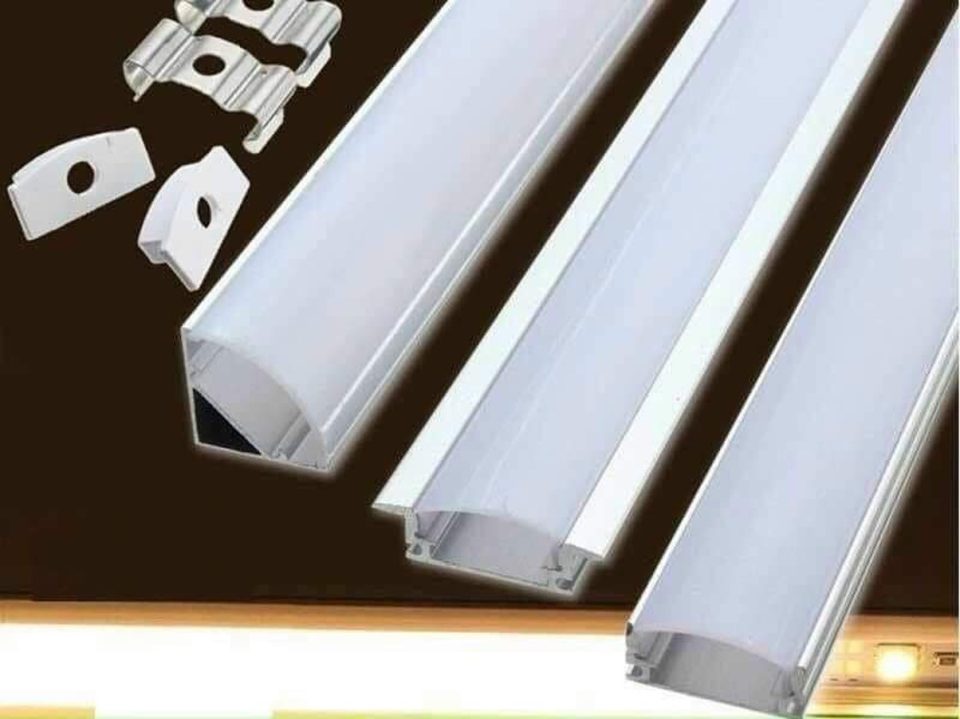In modern industrial and commercial design, lighting isn’t just about visibility, it’s about precision, efficiency and aesthetics. As more workspaces transition to modular construction, the integration of LED lighting systems into aluminium profile structures has become a game changer.
Whether it’s illuminating a workstation, machine enclosure, or retail display, combining aluminium extrusions with LED technology delivers both function and form. Let’s explore how this pairing works and why it’s reshaping how we design and build illuminated environments.
A Perfect Partnership: Aluminium and LED Technology
Aluminium profiles and LED lights complement each other naturally. Aluminium’s excellent thermal conductivity helps dissipate the heat produced by LEDs, ensuring longer lifespan and consistent performance.
Meanwhile, the T-slot design allows LED strips and lighting fixtures to be mounted cleanly within the structure, no need for separate housings or complicated wiring. The result is a streamlined, integrated lighting solution that’s both efficient and visually professional.
Clean Design, Minimal Clutter
One of the biggest advantages of integrating LEDs into aluminium profiles is the clean, seamless appearance it provides. Wires, drivers and connectors can be routed discreetly inside the frame channels, maintaining a tidy workspace or display.
This makes aluminium-framed lighting particularly popular in environments where presentation matters, such as laboratories, showrooms, or high end retail setups. The smooth anodised surface of aluminium also complements the sleek, modern look of LED installations.
Enhanced Visibility and Productivity
In industrial applications, lighting quality directly affects performance and safety. Poor illumination can lead to eye strain, operator fatigue and mistakes.
By embedding LED strips directly into workbench frames, machine enclosures, or inspection stations, engineers can create uniform, shadow free lighting exactly where it’s needed. This precise placement improves accuracy during assembly and enhances quality control.
The combination of adjustable aluminium frames and dimmable LED modules allows lighting to be tailored to each task, boosting both productivity and comfort.
Energy Efficiency and Sustainability
LED systems are already renowned for low power consumption, but integrating them with aluminium profiles takes energy efficiency even further. The aluminium acts as a natural heatsink, helping LEDs operate at optimal temperature and consume less energy over time.
Combined with motion sensors or smart controllers, these systems can significantly reduce energy waste. For factories and workshops focused on sustainability, this pairing supports eco-friendly design and long-term operational savings.
Versatility Across Applications
The potential uses for LED integrated aluminium frames extend well beyond industrial workstations. Examples include:
- Retail Displays: Highlighting products with stylish, integrated lighting that enhances visual appeal.
- Architectural Features: Creating illuminated wall frames, signage, or suspended lighting structures.
- Machine Enclosures: Providing bright, enclosed lighting for visibility during maintenance or monitoring.
- Laboratories and Cleanrooms: Offering glare free, hygienic lighting that’s easy to clean and adjust.
No matter the setting, the modularity of aluminium makes it easy to adapt LED systems for virtually any scale or purpose.
Frequently Asked Questions
Can LED strips overheat inside aluminium profiles?
No, aluminium’s thermal properties actually help draw heat away from LEDs, improving efficiency and longevity.
How are LED lights fixed into aluminium frames?
LED strips can be inserted into T-slot channels using clips or diffusers and the wiring can be hidden within the profiles for a clean finish.
Are aluminium and LED systems suitable for outdoor use?
Yes, provided the LEDs and connectors are rated for outdoor or damp conditions. Aluminium itself is corrosion resistant.
Can lighting be integrated into existing aluminium frames?
Absolutely. Many LED kits are designed for retrofit installation, making it simple to upgrade current frames with minimal disruption.
Final Thoughts
Integrating LED lighting systems into aluminium profile structures offers an unbeatable combination of durability, efficiency and design flexibility. Together, they create illuminated frameworks that are both functional and visually striking.
Whether used in industrial workstations, architectural features, or custom display systems, this synergy enhances both performance and aesthetics. For designers and engineers seeking smart, energy efficient lighting solutions, aluminium and LED technology represent the future of modular illumination.

